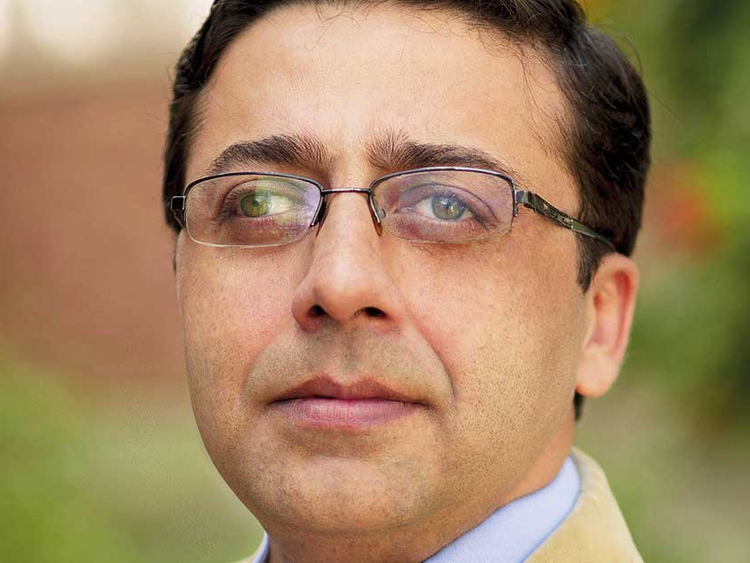
Dubai: Want to pick up a home in India without having to put all your savings into it? For non-resident Indians (NRIs), the present could be the best possible time to go shopping for property back home. Be it in Mumbai or Kochi, now is the time to cut the deal.
Whether for ready or off-plan, property values across major cities have hit rock-bottom or very near it. Buyers back in India are again piling into the market after a near two-year hiatus. (During the same period, it was NRI and institutional investor interest that had sustained the market.) “The uptick in demand is largely based on three factors — the first in that prices have visibly bottomed out,” said Anuj Puri, Chairman of Anarock Property Consultants. “We are not seeing any more major corrections taking place … and properties are a lot more affordable today than in the past.
“The second factor is that there is a generous supply of ready-to-move properties on the market — and unlike in previous years, [their] prices are quite attractive.
“The third reason is that Rera (the Real Estate Regulation Act) has infused greater buyer confidence in the states where it has been implemented in the spirit intended by the Centre. Buyers know that this is an ideal time to buy to make a home purchase decision.”
The demand upsurge has come about despite the hike in interest rates, which has made home loans slightly more expensive than at any point in the recent past. For NRIs, this could well be the moment to double down on their India exposure. The rupee’s weakness — Dh1 gets you Rs18.55 today and there has been speculation about it touching Rs19 — continues to be a factor.
“NRIs have increased their exposure to residential by around 5 per cent over last year, largely because they have more confidence in such investments,” said Puri. “The rupee value certainly plays a role — but it is NRI end users rather than investors who are now focusing more on the Indian residential story.”
Developers are piling prospective buyers with incentives. For the Indian Property Show, which opens Thursday (June 21) at the Dubai World Trade Centre, some are offering 0 per cent interest rate, no EMI (equated monthly instalment) until possession, and even free return air tickets to India.
“More supply of mid- and luxury projects has created a wide gap in demand-supply, resulting in pent-up demand and particularly for large size houses in the affordable housing category,” said Azaz Motiwala, Chairman and Managing Director of Ikon Marketing Consultants. “High net worth individuals have started investing in mid- and luxury at prevailing prices, and that has (also) fuelled the current demand.”
According to him, the current demand cycle could sustain itself over the next three to four years, which could set off price gains in the four metros of Hyderabad, Mumbai, Ahmedabad and Chennai.
But, first, developers have to clear a lot of backlog. Anarock estimates that up to 172,000 unsold units are likely to be ready this year. “With so much ready-to-move-in inventory, developers are keen to offload the same at the earliest,” said Puri. “RTM units with occupancy certificates do not attract GST [goods and service tax], so purchasing such properties is seen as beneficial by buyers.
“In addition, with rising inflation, interest rates are likely to harden in the future — a fact which buyers are aware of, so they see now as the right time to avail of a home loan at the best rates.”
Ikon’s findings reckon there are currently 1 million unsold units across India, mainly concentrated in the eight metros.
With these levels of unsold stock, developers will need to do a lot of thinking before any new launches. “Certainly, it is not a good time for smaller players to be too adventurous with launches,” said Puri. “Their previous ability to raise funds via pre-launches has been drastically cut down by RERA.
“Better-capitalised larger developers can and do — announce new launches as they have enough reason to be confident about their timely completion as per Rera guidelines.”
The GST hasn’t done much for property buyers so far
The widely held belief within India’s property market was that launch of GST (goods and service tax) would help bring down asking prices for property. But the reality to date shows that belief has been widely off the mark. (It was in July last year that GST was rolled out.) “We have not seen such a significant impact on the ground,” said Anuj Puri of Anarock. “(But) if the stamp duty and registration fees would be subsumed under the GST regime, we would definitely see the overall cost of property purchase come down. “GST definitely is reducing developers’ construction costs by negating the morass of double- or triple-taxation to a more moderate level through “input tax credit”. While there are no significant variations in the overall taxes, GST has certainly eliminated the tax-on-tax system. Also, shady transactions are being minimised considerably, bringing in transparency and accountability into the sector. “However, end users have not received a consummate benefit because of the inherent ineffectiveness of anti-profiteering provisions. They will only benefit if the base property prices are reduced and the developers pass on the tax credits to their customers.”
Worryingly for buyers, the overall spend on property deals seems to have increased. “Even after passing on the input tax credit, they may have to pay 3-4 per cent more than in the earlier service tax plus VAT regime,” Puri added.
Clearly, there is quite a stark difference between perceptions about price drops on all projects post-GST and the actual status. In a recent overview put out by JLL India, Ramesh Nair, CEO and country head, said, “The actual factor for such price reduction is based (on) passing of cost savings achieved. This is just one of several factors (that) influence pricing and cannot by default expected as a price default agent.”













